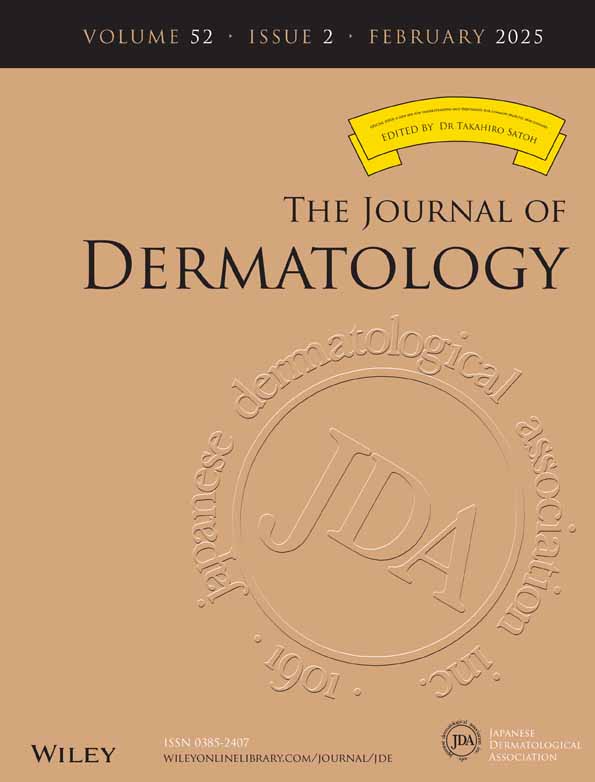Clinical characteristics and outcomes of autoimmune blistering diseases in Japan
Abstract
Autoimmune blistering diseases (AIBDs), including pemphigoid and pemphigus, are intractable dermatological disorders clinically characterized by blistering and erosion affecting mucosal membranes and the skin. Due to their rarity and the limited coverage for less severe cases under Japanese medical subsidies, comprehensive epidemiological analyses encompassing less severe cases have not been conducted in Japan. In this study, we analyzed the epidemiology of AIBDs in Japan, utilizing data from a Japanese nationwide database. We identified 9796 cases of bullous pemphigoid (BP), 62 cases of epidermolysis bullosa acquisita (EBA), 871 cases of pemphigus vulgaris (PV), and 578 cases of pemphigus foliaceous (PF). BP patients exhibited an older age distribution compared to EBA, PV, and PF, with median ages of 81, 72, 65, and 70 years, respectively. Higher rates of comorbidities such as Alzheimer's disease, spondylopathies, and extrapyramidal and movement disorders were observed only in BP cases, while other neurodegenerative disorders such as polyneuropathies, unspecified dementia, and schizophrenia were frequent in both BP and EBA. Dipeptidyl peptidase-4 inhibitors were more commonly prescribed before the onset of BP and EBA compared to PV and PF. Treatment patterns indicated that PV patients were more frequently administered higher doses of oral corticosteroids compared to other AIBDs. Additionally, aggressive therapies, including steroid pulse, intravenous immunoglobulin, and plasmapheresis therapies, were more frequently applied in PV cases. In-hospital mortality rates were higher in BP and EBA at 8.0% and 11.3%, respectively, compared to PV and PF at 2.8% and 5.9%, respectively. Kaplan–Meier analysis indicated that BP and EBA reached a 5-year in-hospital mortality rate of approximately 0.21 and 0.34, while PV and PF rates were approximately 0.07 and 0.11, respectively. The Cox hazard model revealed that higher age is the risk factor for in-hospital mortality in all diseases. Kaplan–Meier analysis indicated a cumulative steroid cessation probability of 0.25 at 3 years for BP, and at 6 and 5 years for PV and PF, respectively. The Cox hazard model revealed that higher age and lower maximum corticosteroid dose contribute to the steroid cessation probability in BP, PV, and PF. This study provides insights into the epidemiology, treatment patterns, comorbidities, and outcomes of AIBDs in Japan.
CONFLICT OF INTEREST STATEMENT
The authors declare no conflict of interest.




